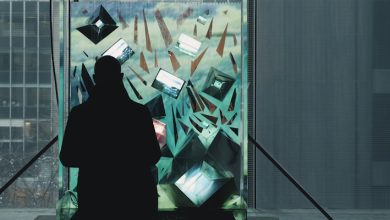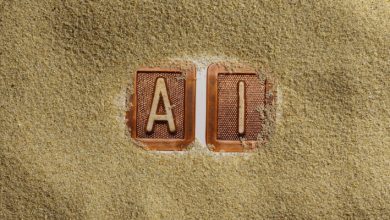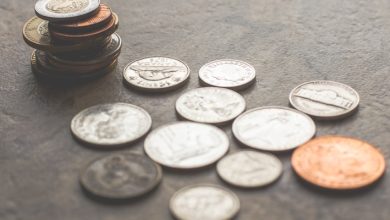The Future of Fractionalized NFTs: Opportunities and Risks

- Understanding Fractionalized NFTs and their Potential
- Exploring the Market Dynamics of Fractionalized NFTs
- The Rise of Fractionalized NFT Platforms: A Game Changer in the Art World
- Mitigating Risks in Fractionalized NFT Investments
- Regulatory Challenges and Implications for Fractionalized NFTs
- Unlocking New Investment Opportunities with Fractionalized NFTs
Understanding Fractionalized NFTs and their Potential
When it comes to fractionalized NFTs, it’s essential to understand their potential and how they work in the digital asset space. Fractionalized NFTs are a unique form of non-fungible tokens that allow multiple owners to own a share of a single NFT. This opens up new opportunities for investors to diversify their portfolios and participate in high-value assets that were previously out of reach.
One of the main advantages of fractionalized NFTs is the ability to invest in expensive assets that would otherwise be too costly for an individual to purchase outright. By owning a fraction of an NFT, investors can benefit from potential appreciation in value without having to commit a large sum of money upfront. This democratization of ownership can attract a wider range of investors to the NFT market.
Additionally, fractionalized NFTs can also enable greater liquidity in the market. By breaking down NFTs into smaller, tradable units, investors have the flexibility to buy and sell fractions of an NFT without needing to find a single buyer for the entire asset. This can help increase trading volume and activity in the NFT market, potentially leading to more efficient price discovery.
However, it’s important to be aware of the risks associated with fractionalized NFTs. Since ownership is distributed among multiple parties, decision-making processes can become more complex, and disagreements may arise over how to manage and monetize the asset. It’s crucial for investors to have clear agreements in place regarding governance and profit-sharing to avoid potential conflicts down the line.
In conclusion, fractionalized NFTs have the potential to revolutionize the way we think about ownership and investment in the digital art world. By providing access to high-value assets and increasing liquidity in the market, fractionalized NFTs can open up new opportunities for both investors and creators alike. However, it’s essential to approach these assets with caution and ensure that proper due diligence is conducted to mitigate risks and maximize potential returns.
Exploring the Market Dynamics of Fractionalized NFTs
The market dynamics of fractionalized non-fungible tokens (NFTs) are complex and multifaceted. Fractionalization of NFTs involves dividing ownership of a single NFT into multiple shares, allowing investors to buy and sell fractions of high-value assets. This process opens up new opportunities for smaller investors to participate in the NFT market, which was previously dominated by high net-worth individuals.
One key advantage of fractionalized NFTs is increased liquidity. By breaking down the ownership of an NFT into smaller fractions, investors can buy and sell shares more easily, allowing for greater market participation. This increased liquidity can help reduce the risk of holding onto illiquid assets, making NFT investments more attractive to a wider range of investors.
Furthermore, fractionalization can also lead to greater price discovery in the NFT market. By allowing more investors to buy and sell fractions of an NFT, the market can more accurately reflect the true value of the asset. This can help reduce price volatility and create a more stable investment environment for NFT holders.
However, there are also risks associated with fractionalized NFTs. One major concern is the potential for market manipulation. Since ownership of an NFT is divided among multiple investors, it can be easier for a large investor to influence the price of the asset by buying or selling a significant portion of the shares. This could lead to price manipulation and create uncertainty in the market.
Another risk is the legal and regulatory challenges surrounding fractionalized NFTs. The ownership structure of these assets can be complex, especially when it comes to issues such as intellectual property rights and royalties. Investors need to be aware of the legal implications of owning fractionalized NFTs and ensure they are compliant with relevant regulations.
In conclusion, exploring the market dynamics of fractionalized NFTs presents both opportunities and risks for investors. While fractionalization can increase liquidity and price discovery in the NFT market, it also comes with potential challenges such as market manipulation and legal uncertainties. Investors should carefully consider these factors before engaging in fractionalized NFT investments to make informed decisions and mitigate risks.
The Rise of Fractionalized NFT Platforms: A Game Changer in the Art World
As the world of art and technology continues to evolve, a new trend is emerging in the form of fractionalized NFT platforms. These platforms are changing the game in the art world by allowing investors to purchase ownership shares in high-value artworks. This opens up a whole new world of opportunities for both artists and art enthusiasts.
By breaking down the ownership of an NFT into smaller, more affordable shares, fractionalized NFT platforms are democratizing the art market. This means that a larger pool of investors can now participate in the ownership of prestigious artworks that were previously out of reach. Additionally, fractionalization allows for greater liquidity in the art market, as shares can be easily bought and sold.
Furthermore, fractionalized NFT platforms are revolutionizing the way artists can monetize their work. Instead of relying solely on selling individual pieces, artists can now tokenize their work and offer shares to a global audience. This not only provides artists with a new source of revenue but also increases their visibility and reach in the art world.
While fractionalized NFT platforms offer many opportunities, there are also risks to consider. The value of fractionalized NFTs can be volatile, as it is influenced by factors such as market demand and the reputation of the artist. Additionally, there is the risk of regulatory changes that could impact the legal status of fractionalized NFTs.
In conclusion, the rise of fractionalized NFT platforms is a game changer in the art world. By providing a new way to invest in and monetize art, these platforms are opening up exciting possibilities for artists, investors, and art enthusiasts alike. However, it is important to proceed with caution and stay informed about the risks involved in this rapidly evolving space.
Mitigating Risks in Fractionalized NFT Investments
Investing in fractionalized NFTs can be a lucrative opportunity, but it also comes with its fair share of risks. It is essential to be aware of these risks and take steps to mitigate them effectively. One key risk in fractionalized NFT investments is the potential for price volatility. The value of NFTs can fluctuate wildly, leading to significant losses if not managed carefully. To mitigate this risk, investors should diversify their portfolio across different types of NFTs to spread out the potential impact of price fluctuations.
Another risk to consider is the lack of regulation in the NFT market. Without clear guidelines and oversight, fraudulent activities can occur, leading to financial losses for investors. To address this risk, it is crucial to conduct thorough research on the NFT projects and platforms before making any investments. Look for reputable marketplaces and projects with a track record of success to minimize the risk of fraud.
Additionally, smart contract risk is a significant concern in fractionalized NFT investments. Bugs or vulnerabilities in smart contracts can lead to funds being lost or stolen, putting investors at risk. To mitigate this risk, investors should carefully review the smart contracts of NFT projects before investing and consider using reputable platforms with robust security measures in place.
Finally, liquidity risk is an important consideration in fractionalized NFT investments. NFTs can be illiquid assets, meaning they may not be easy to sell quickly if needed. To address this risk, investors should have a clear exit strategy in place and be prepared to hold onto their investments for the long term if necessary. By understanding and mitigating these risks, investors can navigate the world of fractionalized NFT investments more effectively and increase their chances of success in this emerging market.
Regulatory Challenges and Implications for Fractionalized NFTs
As fractionalized NFTs continue to gain popularity in the digital art world, regulatory challenges are beginning to surface. The unique nature of NFTs as digital assets raises questions about how they should be classified and regulated by governing bodies. The decentralized and borderless nature of blockchain technology further complicates the issue, as different countries may have varying approaches to regulating NFTs.
One of the main regulatory challenges facing fractionalized NFTs is determining who holds legal ownership of the asset when it is divided among multiple owners. Traditional ownership laws may not easily apply to digital assets like NFTs, leading to ambiguity and potential legal disputes. Additionally, the lack of a centralized authority overseeing NFT transactions makes it difficult to enforce regulations and protect investors.
Another implication of regulatory challenges in the fractionalized NFT space is the potential for money laundering and other illicit activities. The anonymity and pseudonymity offered by blockchain technology can make it easier for bad actors to engage in illegal transactions using fractionalized NFTs. This poses a threat to the integrity of the digital art market and may deter legitimate investors from participating.
Unlocking New Investment Opportunities with Fractionalized NFTs
Investors are increasingly looking for new ways to diversify their portfolios and capitalize on emerging trends in the market. Fractionalized NFTs present an exciting opportunity to access high-value assets without the need for a large upfront investment. By breaking down non-fungible tokens into smaller, more affordable units, investors can now participate in the NFT market with a fraction of the cost.
One of the key advantages of fractionalized NFTs is the ability to unlock new investment opportunities that were previously inaccessible to the average investor. With fractional ownership, individuals can now invest in rare art pieces, collectibles, or digital assets that were once reserved for the elite few. This democratization of access allows for a more inclusive and diverse investor base, driving innovation and growth in the NFT space.
Moreover, fractionalized NFTs offer investors the flexibility to customize their portfolios according to their risk tolerance and investment goals. By diversifying across multiple NFTs, investors can spread out their risk and potentially increase their returns. This strategy allows for a more balanced and resilient portfolio, mitigating the impact of market volatility and fluctuations in asset prices.
Overall, fractionalized NFTs open up a world of possibilities for investors looking to tap into the potential of the NFT market. Whether you are a seasoned investor or a newcomer to the space, fractionalized NFTs provide a unique opportunity to participate in the future of digital ownership. As the market continues to evolve and grow, now is the time to explore the possibilities of fractionalized NFTs and unlock new investment opportunities.




